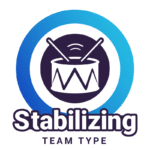Everything you need to know about a Specialist
How each Reference Profile works, collaborates, and leads
Everything you need to know about an Adapter
Everything you need to know about an Altruist
Everything you need to know about an Analyzer
Everything you need to know about an Artisan
Everything you need to know about a Captain
Everything you need to know about a Collaborator
Everything you need to know about a Controller
Everything you need to know about a Guardian
Everything you need to know about an Individualist
Everything you need to know about a Maverick
Everything you need to know about an Operator
Everything you need to know about a Persuader
Everything you need to know about a Promoter
Everything you need to know about a Scholar
Everything you need to know about a Specialist
Everything you need to know about a Strategist
Everything you need to know about a Venturer
Specialists in a team
Your Reference Profile won’t only tell you about who you are, but also the unique work styles that you contribute to a team. The PI Science team conducted research to link the four framework quadrants below to the four drives measured by the PI Behavioral Assessment™. Each individual on your team will be plotted into the quadrant framework based on their behavioral pattern. Below shows each of the profile types and where they land.
Now that we know which Reference Profiles fall into which quadrants, we can start talking about Team Types. The PI Behavioral Assessment™ provides a deep look into an individual’s workplace behavior by understanding that person’s motivations and needs. However, most of the time, work happens via teams, so it’s important to understand the overall behavioral makeup of a team. Team Types provide a simple approach to understanding behavioral data at a team level. PI has defined a number of Team Types based on the collection of personalities on a team and where they fall within the four quadrants we mentioned earlier.
Specialist’s Team Type
When a team has multiple Specialists or similar personalities that fall within the Process & Precision quadrant, you will be defined as a Stabilizing Team.
A Stabilizing Team is structured, task-focused and practical.

Stabilizing team strengths
- Consistent and efficient
- Well defined chain of command
- Clear view of work to be done
Stabilizing caution areas
- Extensive processes can be limiting
- Can struggle in faster environments
- Strict guidelines might stifle creativity
A Stabilizing Team occurs when a majority of team members fall within the Process & Precision quadrant. But what happens when you’re a Specialist on a team with a majority of individuals in other quadrants? It’s common to have many unique personalities on a team.
The activity below shows not only the different Team Types associated with other quadrants, but also some tips on how Specialists can leverage their unique strengths to help balance a team.
Keep in mind: We’ve only mentioned four Team Types throughout this course, but there are actually nine in total. You’ve already learned the different types of team work styles based on the four quadrants, plus some tips on how to flex for each. Based on what you know about Specialists, are there other ways you can stretch to accommodate the additional work styles? What team style do you think you’re a part of?
Next, we’ll cover how Specialists will act as leaders and share ways to maximize their effectiveness.
